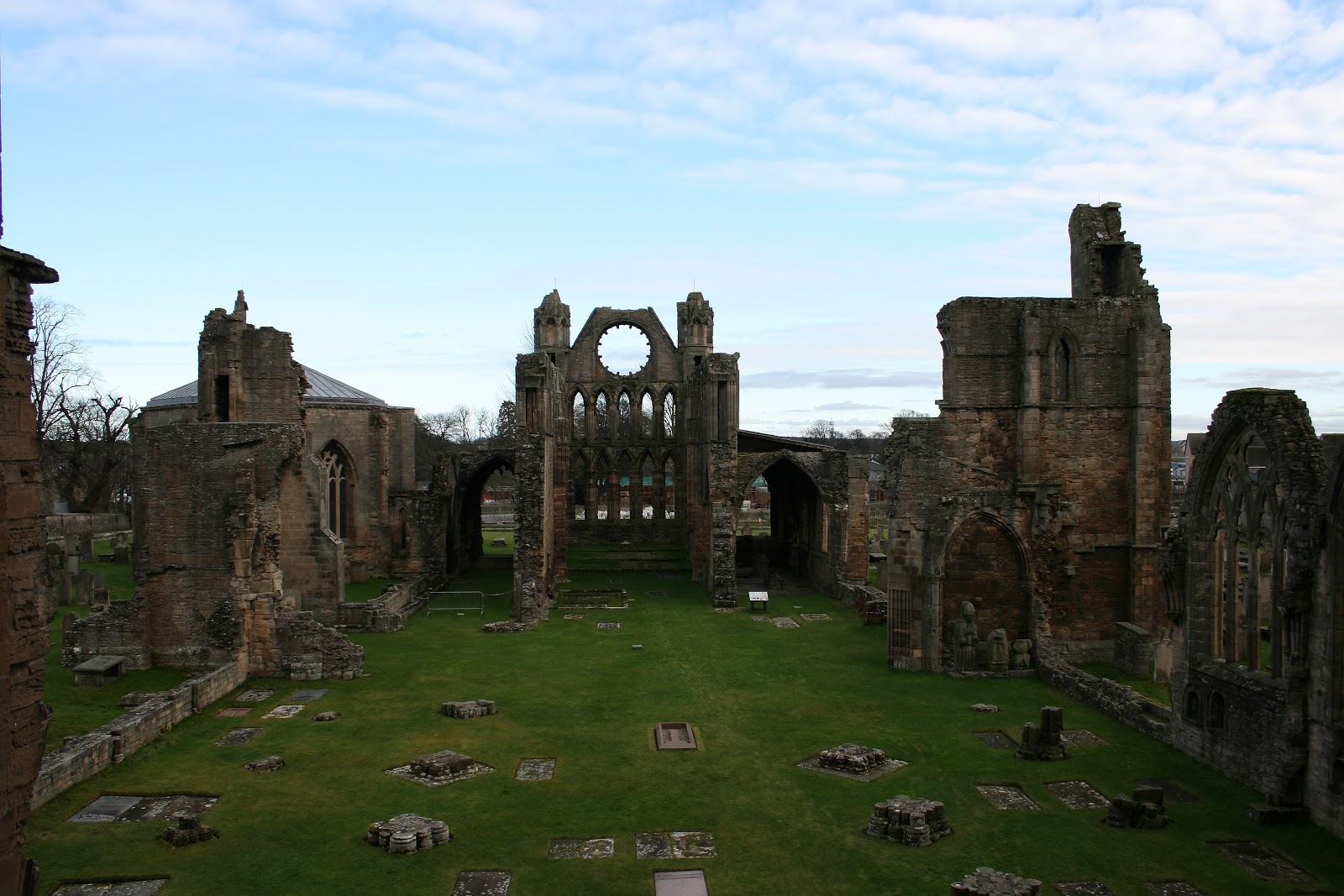Drum Castle
 Dating from the 13th century, Drum Castle was owned by the Irvine family for over 650 years. The castle features a 13th-century tower, the oldest intact in Scotland. Drum Castle is an excellent
example of how grand families extended and gradually changed their original
defensive homes to match their requirements. This is reflected in Drum Castle's blend of building styles, with its medieval tower,
Jacobean mansion and Victorian additions.
Dating from the 13th century, Drum Castle was owned by the Irvine family for over 650 years. The castle features a 13th-century tower, the oldest intact in Scotland. Drum Castle is an excellent
example of how grand families extended and gradually changed their original
defensive homes to match their requirements. This is reflected in Drum Castle's blend of building styles, with its medieval tower,
Jacobean mansion and Victorian additions.
The castle is closed to the general public during the winter months, so we could only admire the castle from the outside. According to the information available online, the castle includes superb furniture, fine paintings and magnificent views from the battlements of the Forest of Drum and the countryside beyond. We plan to go back later to take a look inside and hopefully get a guided tour too. For the moment a virtual tour of the castle is the closest we get to seeing the inside of the castle.
While we visited Drum Castle, the boys were thrilled to have plenty of time to play on the great children's playground. The playground was not very big, but offered challenges for children of all ages.
After the boys had played on the playground for quite a while, we took the opportunity to explore the magnificent woodland trails. The terrain was quite varied, even within one fairly short trail. We had a great day out and even discovered 'Nessie' in the woods.

After our arrival in Scotland, we soon noticed that there is a lot of moss on fences and other wooden structures. It seems that the climate is quite moist, even through winter, which allows the moss to grow all year round. Having moss on branches that have fallen on the ground (ref. 'Nessie' above) was not such a big surprise, but seeing moss on the branches of the trees was quite new to us. And such vast quantities! Some trees were more or less covered in moss. When we later visited Crathes castle, we even discovered moss growing on one of the hedges!
Castle Fraser
 Built between 1575 and 1636 by the 6th laird, Michael Fraser, Castle Fraser is the most elaborate Z-plan castle in Scotland. Z-plan is a form of castle design common in England and Scotland, which has a strong central rectangular tower with smaller towers attached at diagonally opposite corners. The castle was modernised in a classical style in the late 18th century, with a new entrance inserted in the south side and sash windows throughout.
Built between 1575 and 1636 by the 6th laird, Michael Fraser, Castle Fraser is the most elaborate Z-plan castle in Scotland. Z-plan is a form of castle design common in England and Scotland, which has a strong central rectangular tower with smaller towers attached at diagonally opposite corners. The castle was modernised in a classical style in the late 18th century, with a new entrance inserted in the south side and sash windows throughout.  Castle Fraser retains the atmosphere of a family home and still contains
the original contents, including Fraser family portraits, furniture and
collections. The interiors represent all periods of the
castle's history, from the Medieval stone vaulted Great Hall to the
Regency Dining Room.
Castle Fraser retains the atmosphere of a family home and still contains
the original contents, including Fraser family portraits, furniture and
collections. The interiors represent all periods of the
castle's history, from the Medieval stone vaulted Great Hall to the
Regency Dining Room.
The castle is open between Easter and October, so we have to come back later in order to see the insides. However, the children had a great time in the Woodland Secrets play area and exploring the 18th-century walled garden. I was very pleased to see spring flowers already in the middle of February and looked forward to an early and warm spring. I could hardly have been more wrong....

While we were visiting the castle grounds, we also took the opportunity to go for a nice, long walk in the surrounding woodland. Once again the amount of moss fascinated us. I wonder how long timber can lie on the ground before it is covered in moss and unsuitable for sale....?





















